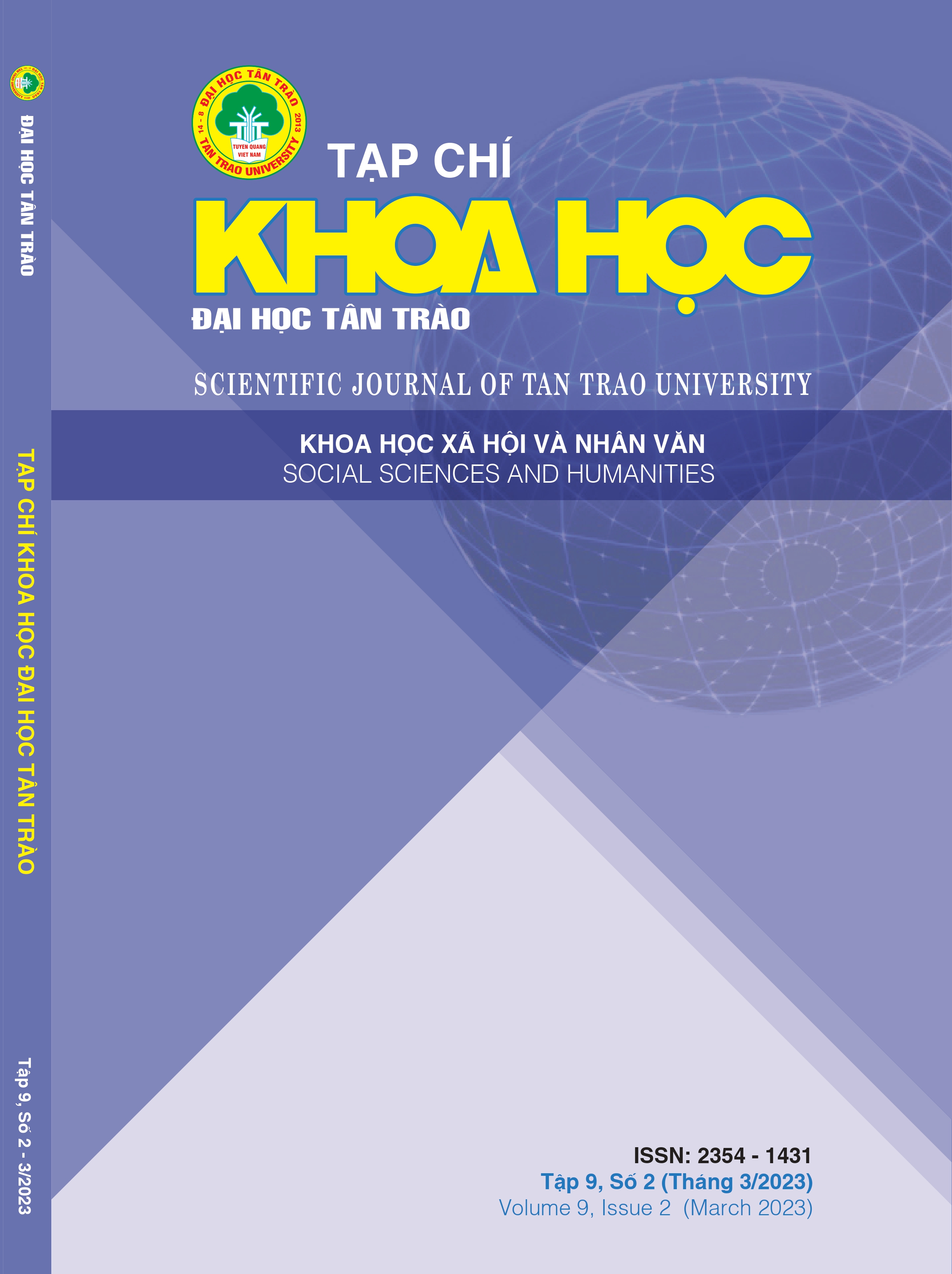DESIGNING ACTIVITIES TO TEACH NATURAL SCIENCES IN GRADE 6 TOPIC: "WINDMILL MODEL" ORIENTED TOWARDS STEM EDUCATION
DOI:
https://doi.org/10.51453/2354-1431/2023/908Keywords:
STEM Education, natural sciences, energy, renewable energy, energy transformation.Abstract
The article refers to STEM education, about teaching Natural Science subjects according to STEM lessons and applying the STEM education-oriented teaching organization process to design teaching activities in Natural Science 6 with theme: "Windmill model". Thereby, helping teachers have more reference materials about the teaching process according to STEM lessons and applying the materials to teaching in high schools.
Downloads
References
[1] Capraro, R.M. - M.M. Capraro - J.R. Morgan (2013). STEM project-based learning: An integrated science, technology, engineering, and mathematics (STEM) approach. Springer Science & Business Media.
[2] Ministry of Education and Training. (August 14, 2020). Official Dispatch No. 3089/TT-BGDĐT dated August 14, 2022 of the Minister of Education and Training on the implementation of STEM education in secondary education.
[3] Nga, N.T. (editor), Muoi H.P., Hai P.V, Linh N.Q, Dung N.A., Tue N.T.. (2018). Teaching STEM topics to middle and high school students. Ho Chi Minh: Ho Chi Minh City University of Education Publishing House.
[4] Nga N.T, Diem L.T.H. Organized teaching the topic "The Miracle of the Lung" (Physics 10) in the direction of STEM education to develop technical thinking for students. Journal of Education, Ministry of Education and Training, Special issue, May 1, 2020, pp. 150-154.
[5] Proceedings of the Scientific Conference on STEM Education in the New General Education Program, Ho Chi Minh City Pedagogical University Publishing House, Ho Chi Minh City.
[6] Quang L.X. (2017). Teaching high school technology in the direction of STEM education. Doctoral Thesis in Educational Science, Hanoi National University of Education.
[7] Tiep P.Q. (2017). The nature and characteristics of the STEM education model. Journal of Educational Science, Vietnam Academy of Educational Sciences, No. 145, pp. 61-64.
[8] Tho C.C. (2016), “Lessons from changing teacher training/retraining from STEM festival and open math day in Vietnam”, Journal of Science, Hanoi National University of Education, 61(10) , p. 195-201.
[9] Thong D.N. (2014), “Vietnamese general education program from STEM education perspective”, Proceedings of the workshop, Ministry of Education and Training.
[10] Tuan D.V. (2014), “Things to know about STEM education”, Journal of Informatics and Schools, 182.
[11]. Tra D.H. (editor, 2015). Integrated teaching develops students' ability (Book 1 - Natural Science). Pedagogical University Publishing House.
[12] Tiep P.Q. (2017). The nature and characteristics of the STEM education model. Journal of Educational Science, Vietnam Academy of Educational Sciences, No. 145, pp. 61-64.
Downloads
Published
How to Cite
Issue
Section
License

This work is licensed under a Creative Commons Attribution-ShareAlike 4.0 International License.
All articles published in SJTTU are licensed under a Creative Commons Attribution-ShareAlike 4.0 International (CC BY-SA) license. This means anyone is free to copy, transform, or redistribute articles for any lawful purpose in any medium, provided they give appropriate attribution to the original author(s) and SJTTU, link to the license, indicate if changes were made, and redistribute any derivative work under the same license.
Copyright on articles is retained by the respective author(s), without restrictions. A non-exclusive license is granted to SJTTU to publish the article and identify itself as its original publisher, along with the commercial right to include the article in a hardcopy issue for sale to libraries and individuals.
Although the conditions of the CC BY-SA license don't apply to authors (as the copyright holder of your article, you have no restrictions on your rights), by submitting to SJTTU, authors recognize the rights of readers, and must grant any third party the right to use their article to the extent provided by the license.


